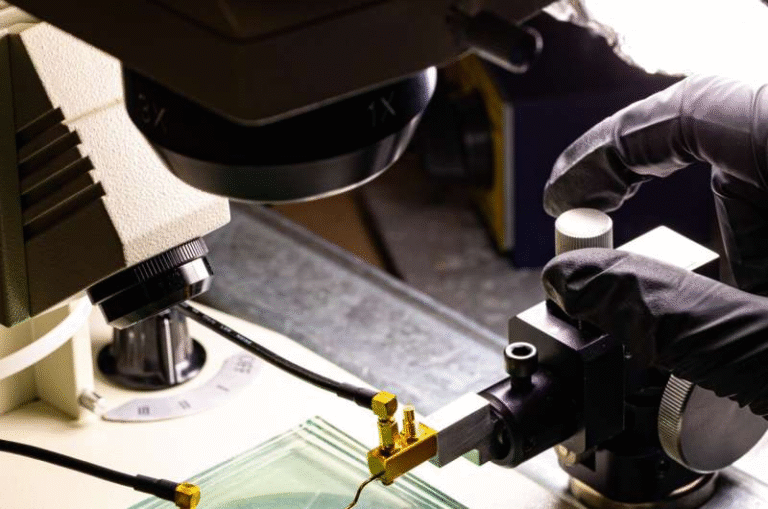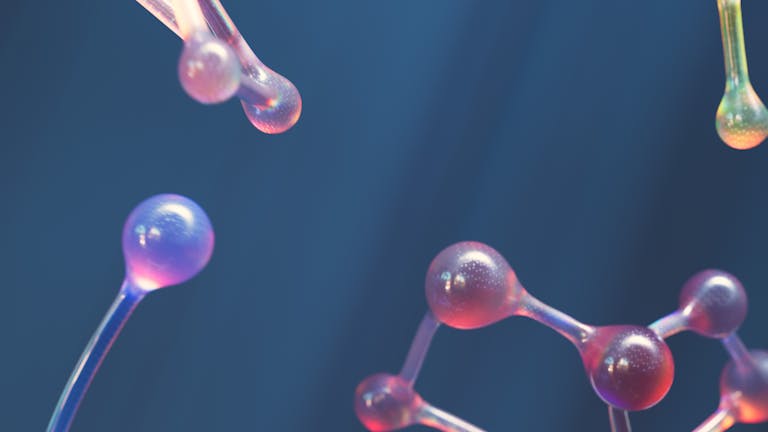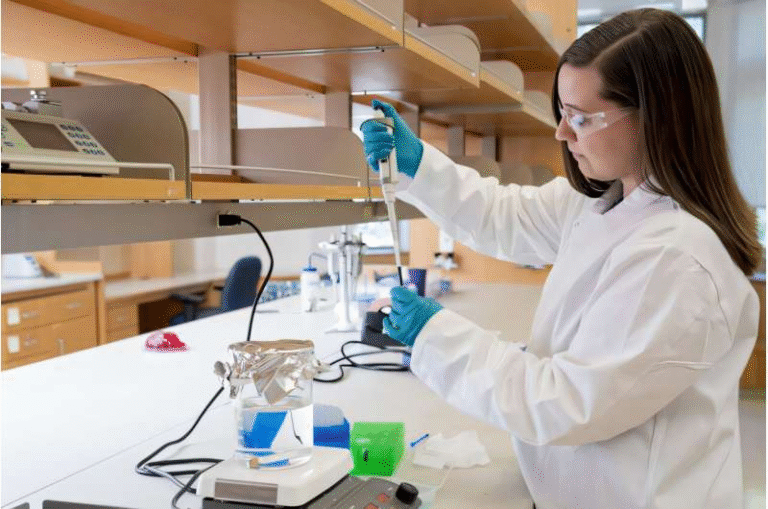Quantum Leap in Silicon: UNSW Engineers Entangle Nuclear Spins Across Chips

Researchers at the University of New South Wales (UNSW) in Sydney have pulled off a remarkable achievement in the race toward scalable quantum computing.
They have successfully entangled nuclear spins inside a silicon chip, using electrons as intermediaries, in a way that has never been done before. This milestone moves quantum computing closer to being practical on the same technological scale as today’s semiconductor devices.
The Core Breakthrough
The UNSW team demonstrated entanglement of nuclear spins—a fundamental quantum operation—between two phosphorus atoms embedded in silicon. What makes this stand out is that each nucleus was paired with its own electron, and the interaction between the electrons allowed the nuclei to “talk” to one another. In quantum physics, this is crucial because entangled particles share a deep connection: measuring one instantly influences the other, no matter the distance between them.
Traditionally, nuclear spins have been prized for their long coherence times, meaning they can hold quantum information far longer than many other qubit types. But the challenge has always been the opposite side of the coin: they are too isolated. While this makes them incredibly clean quantum objects, it also makes it hard to get them to interact, which is necessary for computation.
Until now, the only way to couple multiple nuclei was by attaching them to the same electron. That worked, but it wasn’t scalable, since it limited how many nuclei could be connected and controlled. The new method solves that bottleneck by using separate electrons that interact with each other through exchange coupling.
How It Works
The researchers used two phosphorus atoms implanted in a silicon chip. Each atom’s nucleus acted as a qubit. An electron bound to each phosphorus atom became the mediator. When the two electrons interact with one another, they allow the two nuclei to become entangled, even though they are not directly touching.
The team implemented a controlled-Z (CZ) gate, which is a standard two-qubit quantum logic gate. They also generated a Bell state (a maximally entangled state), demonstrating that the system was indeed capable of producing and measuring entanglement.
- Distance between the nuclei: about 20 nanometers (roughly one-thousandth the width of a human hair). To visualize, if each nucleus were scaled up to the size of a person, this distance would be the same as that between Sydney and Boston.
- Fidelity of entanglement: about 76 ± 5 percent.
- Concurrence (a measure of quantum entanglement strength): around 0.67 ± 0.05.
The numbers show this is not just a concept but a working experiment. While not yet at the near-perfect fidelities required for fault-tolerant quantum computing, these results are highly promising.
Why It Matters
There are two major reasons why this work is a game-changer:
- Scalability – The nuclei were separated by about 20 nanometers, which is exactly the kind of feature size routinely used in modern silicon chips. This means the process is compatible with existing semiconductor manufacturing methods. You already carry billions of 20 nm silicon transistors in your phone or laptop—this experiment was done on the same scale.
- Balance of coherence and interaction – Nuclear spins are fantastic for coherence but bad at interacting. Electrons are good at interacting but bad at holding quantum states for long. By combining them, the UNSW researchers unlocked a practical way to have long-lived quantum memory that can also be entangled and used in computation.
The People Behind the Work
The project is led by Professor Andrea Morello at UNSW, who has spent 15 years pushing this line of research. Over those years, his group has already shown that nuclear spins in silicon can store quantum information for over 30 seconds—a lifetime in quantum terms—and can perform logic operations with less than 1% error.
But the isolation that made those nuclei so clean also made them very hard to scale. This new method is the answer to that challenge.
Lead author Dr. Holly Stemp, who is now at MIT in Boston, described the approach as allowing nuclear spins to communicate as if given “telephones.” Before, they were like people in a soundproof room who could only talk if they were all inside the same small space. Now, electrons act as the telephones, enabling communication across distances.
Other collaborators included Mark van Blankenstein and a large team spanning UNSW, the University of Melbourne, and Keio University in Japan. The phosphorus atoms were introduced into the silicon chip by Professor David Jamieson’s group at Melbourne, and the ultra-pure silicon wafers were provided by Professor Kohei Itoh at Keio.
What the Numbers Mean
To unpack the results a little more:
- 76% fidelity means that in about three-quarters of the cases, the entangled state produced was correct. For comparison, most error-corrected quantum computing schemes demand gate fidelities above 99%. While 76% is far from that benchmark, it is strong evidence that this coupling method works and can be improved.
- Concurrence of 0.67 is a significant measure, as anything above zero indicates entanglement, and values close to one indicate strong entanglement. A value of 0.67 is robust for a first-of-its-kind demonstration.
- The experiment also showed that electrons can be manipulated in space, stretched, or reshaped to optimize coupling. This tunability means more complex and scalable designs are possible.
Broader Quantum Context
Quantum computing hardware is a highly competitive field, with many different technologies in the race. Each platform has strengths and weaknesses:
- Superconducting qubits (used by Google, IBM) can perform fast operations but are highly sensitive to noise.
- Trapped ions (used by IonQ, Quantinuum) are extremely precise but slow and harder to scale.
- Photonic qubits are great for communication but struggle with strong interactions.
- Spin-based qubits in silicon, like the UNSW approach, have the advantage of being directly compatible with the trillion-dollar semiconductor industry.
The vision of a “silicon quantum computer” has long been pursued because it could potentially use the same fabrication methods that built classical computing. UNSW’s achievement is a concrete step toward making that vision real.
Challenges Ahead
While the breakthrough is significant, challenges remain:
- Fidelity needs improvement. Scaling to larger systems will demand near-perfect entanglement operations.
- Decoherence and noise will still be an issue, particularly as systems grow more complex.
- Engineering scalability: While 20 nm separation is a great start, connecting thousands or millions of qubits will require clever architectures and error correction layers.
- Integration with control electronics will also be non-trivial, as quantum chips require operation at cryogenic temperatures and complex control hardware.
Why Nuclear Spins Are Special
A nuclear spin is the quantum property of an atom’s nucleus. It’s similar to the spin of an electron but much more stable because the nucleus is heavier and less affected by external disturbances. This stability is why nuclear spins can store quantum information for extraordinarily long times.
In fact, UNSW’s earlier work showed quantum memory in nuclear spins lasting over 30 seconds—longer than many other platforms by orders of magnitude. This makes them excellent candidates for quantum memory qubits, storing information while other faster qubits do the heavy lifting.
By entangling nuclear spins, researchers have demonstrated they can be more than just passive memory—they can actively participate in computation.
Future Possibilities
Looking ahead, this approach opens up exciting possibilities:
- Electron-mediated networking of nuclear spins could allow flexible and reconfigurable connections across a chip.
- Hybrid architectures might use nuclear spins for storage and electron spins for fast operations, combining the best of both worlds.
- Industry integration: Because this work happens at the same scale as existing transistors, it could eventually leverage semiconductor fabrication at massive scales.
The UNSW group suggests that more electrons could be added in the future and shaped into elongated clouds, letting them couple nuclei spread even further apart. This could expand the size and flexibility of nuclear-spin-based quantum processors.
Related Background: The Kane Quantum Computer
This line of research connects back to the Kane quantum computer, a proposal made in 1998 by physicist Bruce Kane. His idea was to use phosphorus nuclear spins in silicon as qubits, with electrons as mediators for control and entanglement. For decades, this was seen as a visionary but distant possibility. UNSW’s new experiment is one of the most direct experimental realizations of that vision to date.
Closing Thoughts
The UNSW breakthrough is more than just another quantum experiment—it’s a demonstration that nuclear spins in silicon can be entangled in a way that matches the feature sizes of existing computer chips. By bridging coherence and interaction through electrons, the researchers have shown a clear path forward to scalable silicon-based quantum computing.
While many hurdles remain before quantum computers surpass today’s machines, this achievement brings that future closer and aligns with an industry that already knows how to make billions of silicon devices at nanometer scales.
Research Reference: Scalable entanglement of nuclear spins mediated by electron exchange – Science (2025)





